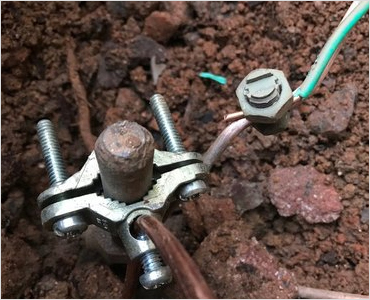We Provide Best Electrical Service.
Earthing Services
Earthing Services
"Earthing services" typically refer to the installation and maintenance of earthing systems, which are designed to protect electrical systems, equipment, and personnel from the dangers of electrical faults and lightning strikes. These services involve installing grounding rods, conductors, and other components to safely dissipate electrical currents into the ground. Proper earthing is essential for the safety and reliability of electrical systems in residential, commercial, and industrial settings. If you need more specific information or assistance with earthing services, feel free to ask!

Types of Earthing Services:
Earthing services refer to the techniques used to establish a connection between electrical systems and the earth to ensure safety and proper functioning.
There are some common types of Earthing Services like Chemical Earthing, Lightning Protection Earthing, Plate Earthing, Rod Earthing, Strip Earthing, Pipe Earthing, Plate Electrode Earthing, Maintenance-Free Earthing etc., Plate Earthing: In plate earthing, a copper or galvanized iron plate is buried vertically in the ground. This plate provides a low-resistance path for fault currents to dissipate into the earth.
Rod Earthing: Rod earthing involves driving a metal rod, usually copper or galvanized iron, into the ground. This rod serves as a grounding electrode, allowing excess electrical charge to safely dissipate into the earth.
Strip Earthing: Strip earthing utilizes a metal strip, typically copper or aluminum, buried horizontally in the ground. This method is commonly used in areas with rocky terrain where driving rods or plates may be difficult.
Pipe Earthing: Pipe earthing involves burying a metal pipe, such as a GI (Galvanized Iron) or copper pipe, vertically into the ground. The electrical system is then connected to the pipe, allowing fault currents to flow into the earth.
Chemical Earthing: Chemical earthing involves the use of a chemical compound, such as a conductive backfill material, to improve the conductivity of the soil around the grounding electrode. This method is often used in areas with poor soil conductivity.
Plate Electrode Earthing: Plate electrode earthing uses a large metal plate buried horizontally in the ground. This plate provides a large surface area for effective dissipation of fault currents.
Maintenance-Free Earthing: Maintenance-free earthing systems utilize advanced materials and designs to minimize the need for regular maintenance and ensure long-term reliability.
Lightning Protection Earthing: Lightning protection earthing systems are specifically designed to safely dissipate the immense energy of lightning strikes into the ground, protecting structures and electrical systems from damage.
Each type of earthing service has its advantages and is chosen based on factors such as soil conditions, terrain, and the specific requirements of the electrical system being grounded.
